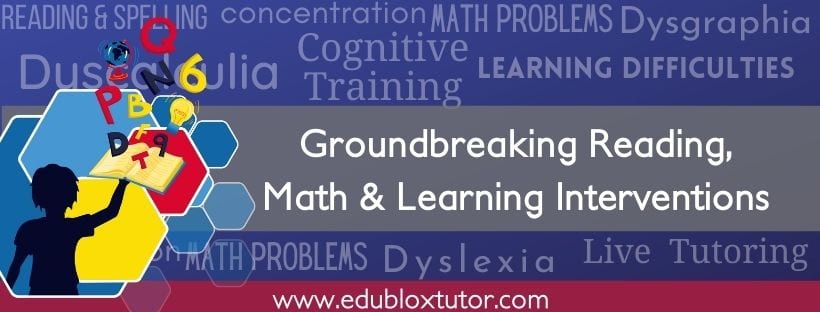
The ability to write is a vital skill we are taught from an early age to communicate with others, a basic necessity that cannot be avoided. In our technology-driven age, many people have lost the ability to write neatly, with computers, netbooks, and tablets replacing the need to physically put pen to paper (or use a dictionary, thanks to Spellcheck!).
However, technology can’t hide everything, and there is a severe reality that the ability to write does not come easily to everyone. The term dysgraphia is often used when discussing writing disabilities. Dysgraphia can refer to extreme problems with handwriting, spelling, and written composition. It can also refer to handwriting difficulties only, which is the focus of this article.
Due to a lack of a clear-cut definition for dysgraphia and the dearth of research focused specifically on it, there are few statistics regarding prevalence. However, written language disabilities are prevalent in students with learning disabilities and tend to be persistent.
Table of contents:
- Symptoms of handwriting problems
- What causes handwriting problems?
- Dysgraphia and handwriting program
- Overcoming handwriting problems – a success story
Symptoms of handwriting problems
Just because your child doesn’t have a neat handwriting does not necessarily mean that they have dysgraphia; there are nevertheless some warning signs to look out for that could help you identify signs of dysgraphia. A few of these signs include:
- awkward pencil grip;
- avoiding writing or drawing tasks;
- trouble forming letter shapes;
- inconsistent spacing between letters of words;
- poor understanding of uppercase and lowercase letters;
- tiring quickly while writing;
- illegible handwriting;
- a mixture of cursive and print writing and
- saying words out loud while writing.
As with all learning problems, a writing disability can devastate a child’s education and self-esteem and cause significant limitations to that child’s career path. A child with a writing disability will find it increasingly difficult to express their knowledge on many subjects. Thus, the writing process stands in the way of learning.
What causes handwriting problems?
Learning is a stratified process, which implies that specific skills must be mastered before it becomes possible to master subsequent skills. One has to learn to count before being able to do mathematics. In the same way, there are skills that a child must master before being proficient in handwriting. Underlying shortcomings must first be addressed before the child’s handwriting will improve.

In her book Learning Disabilities: Theories, Diagnosis, and Teaching Strategies, Janet Lerner states that some of the underlying shortcomings that interfere with handwriting performance are a faulty visual perception of letters and words, difficulty retaining visual impressions, and poor motor skills. The child’s problem may also be related to cross-modal transfer from the visual to motor modalities.
Handwriting problems can be addressed and treated successfully by automatizing visual perception, improving visual memory, addressing motor skills, and practicing sensory motor integration.
Dysgraphia and handwriting program
Below are some guidelines to help you get the maximum benefits from this program:
1. Study the program. The program aims to improve a schoolchild’s handwriting ability; it consists of exercises to automatize visual perception and enhance visual memory, motor skills, and sensory-motor integration.
2. Start learning the exercises. Once you have studied the program, you should read how to execute the exercises. Do not try to learn all the exercises at once.
Let the learner start with Development Tutor. Each lesson consists of 3 exercises and takes approximately 20 minutes to complete. Requirements for Development Tutor are Windows (7 or newer) and Mac Computers, using Google Chrome. It is also compatible with Android tablets, minimum screen size: 10″; minimum screen resolution: FHD (1920×1080) or FHD+ (1920×1200).
Parents don’t have to sit with their children while they are doing Development Tutor, but they need to keep an eye to ensure that they are doing the exercises without making notes or using aids to get the answers right. However, when doing the logical thinking exercise, they may use any aids.
In the case of younger learners and those with very slow processing speed, extending the timer is recommended. You can set it back to normal in 2-3 months.
Once the learner is comfortable with Development Tutor, learn to do Step 1 of the Directionality exercise. Try it with the learner when you feel confident that you can do this exercise.
After mastering this exercise, learn the next exercise and do both with the learner. Continue in this way until you can do all the exercises that appear in the program. This can be done in multiple sittings. It is quite alright if you learn one exercise per day.
3. Find a quiet time and a quiet place. You will want to find a time that is relatively free from distractions, especially in the beginning, so that the learner can concentrate.
4. Find a suitable time. Early morning is a good time since it helps the learner organize their mind for other intellectual challenges they may face during the day. If the learner goes to school and you can only do the program with them after school, they will need a break before beginning the program.
Depending on your situation, you may break the lesson plan into two short sessions instead of one long session. You could, for example, let the learner do Development Tutor in the morning and the other exercises in the afternoon.
If the learner is in a boarding school and only comes home during the weekends, doing a minimum of three, if possible five lessons over the weekend has shown to be a viable solution.
5. Determine how many sessions there should be. You will need to determine how many sessions you will do during the week. The program below is approximately 45 minutes in length. Ultimately, one would do five lessons per week, especially if the learner’s problem is severe. Three weekly sessions will probably be sufficient if the learner’s problem is not too severe. The basic principle is that the more time you can put into the program, the faster the progress you can expect.
6. Working with more than one child at one time. It is not recommended that you work with two or more learners simultaneously, as you will compromise the effectiveness of the program.
7. Consider lightening the student’s academic load. A child working on developing their brain function may become tired during the initial stages. You may need to cut back on their schoolwork until they function better.
Some parents are hesitant about cutting back on schoolwork, fearing that their child will get further behind than they already are. It might help to think of this analogy: Imagine a car that needs repair and is limping along the highway at 35 miles per hour. You can either continue the journey and eventually reach your destination, or you can stop the car, get it fixed, and then speed to your destination at 65 miles per hour. It is certainly easier to get the car fixed!
Edublox dysgraphia and handwriting program
Development Tutor for 15-25 minutes (3 exercises)
Directionality exercise step 1 (or 2, or 3) for 2 minutes (Password = 54321)
Spatial exercise step 1 (or 2, or 3, or 4) for 1-4 minutes (Password = 65432)
Crumple Papers exercise 2 for 1-3 minutes
Writing exercise step 1 (or step 2, or step 3, or step 4, or step 5) for 5 minutes
Beanbags exercise step 1 (or 2, or 3, or 4) for 3 minutes
Balance exercise step 1 (or 2, or 3, or 4) for 3 minutes
One must ensure that a learner’s handwriting problems have been solved completely before discontinuing the program.
Overcoming handwriting problems – a success story
I have been following the Dysgraphia Program from Edublox and we are thirty (30) hours into the program. I sought out a program to address my nine year old son’s difficulties in writing, both the mechanics of writing and the process of composing a written paragraph. Although my son had completed occupational therapy in school to address fine motor weaknesses and had improved, his handwriting remained inconsistent.
After thirty hours, I can honestly say his handwriting is no longer an issue. It has become automatic for him to write neatly and legibly, whereas before, his writing varied depending on the day and the amount of effort he was willing to put in to be neat. This has also positively affected his ability to compose a written paragraph. Because he does not have to concentrate on the mechanics of writing, he is more able to focus on the composing part of writing, and he is able to write longer and more well organized sentences and paragraphs.
Another big part of my satisfaction with this product has been the support I have received in the form of prompt responses to my emailed questions about using Edublox.
It’s great to know that you can do something to resolve areas of weakness instead of standing by helplessly watching your child struggle.
Thanks again,
Jennifer Gilliland
United States.

